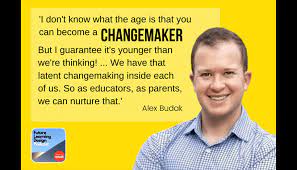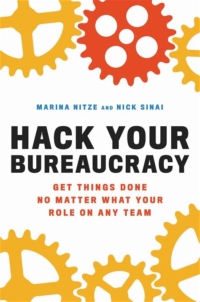
Last Saturday, I was asked to consider dilemmas that were perplexing two of my friends. Once I thought about them, I realized that I faced a third and related one in my own work. In other words, if I could help them, I could also help myself.
Unfortunately, for the first few hours, I was clueless and could see myself beginning a journey toward what I call being politically clinically depressed. And it was an unusually tough bind, because I’d given myself a mid-week deadline to respond to my friends’ requests.
Luckily, an unexpected half hour of television the next day led me back to two other things that had crossed me desk in the previous week that began helping me see ways of those dilemmas.
My Dilemmas
But, as usual, I’m getting ahead of myself. It would to see the dilemma(s).
A Classroom Quandary
The initial challenge came from a friend who is teaching the capstone course in a new certificate program that emphasizes grass roots conflict resolution often via community mediation. Her challenge is worth quoting in its entirety:
One of my students is still trying to find groups to work with, who are experiencing a bit of conflict and are open to having someone from the outside help them think through the situation and possibly resolve it — whether via mediation, facilitation, or other.
I’m not finding any groups in my network who are open to this, and I wonder if you might have any thoughts. It doesn’t even need to be two groups in open conflict. With my last student, she found two groups who theoretically “should” be working together, but simply weren’t, and helped them identify why and create a path forward together.
No worries if you don’t have any thoughts. It requires groups to be vulnerable, and that’s hard. But I thought I’d ask!
The problem was that I couldn’t think of any either.
Because of a deeper problem.
Most of the people I work with do a great job of conflict avoidance as well as conflict resolution. In other words, we’re good at helping people solve their problems once they arise. But, in our own lives, we try to keep those problems from arising.
Even when they should.
In other words, I don’t think we can solve the student’s problem until we get more of that conflict into the open and talk it through.
For example, what are the best approaches to dealing with toxic polarization? Under what circumstances? With which partners?
Stuck in a Rut
Almost as soon as that email came in, my wife and I had a Zoom conference with old friends who are working on the challenges facing American democracy. Among other things, they pointed to something that we see all the time that echoes what our other friend’s student’s dilemma.
These friends are mostly working with groups in the so-called bridging world that tries to address toxic polarization and the like, which we are also loosely connected to.
But our friends pointed us toward a problem I hadn’t thought enough about before. The organizations they work with are good at telling each other what they are working on, but they aren’t very good at actually working with each other on projects that could take what they are doing to scale, however you choose to define scale.
And, since my wife and I have a history of bringing groups together for purposes along those lines and because this problem was a lot like the one my other friend’s student faced….
My Own Version
As regular readers know, I’ve been building a loose network of individuals and organizations that is trying to “connect the dogs across ideological and issue based silos. While I’m having a good time and making lots of useful and promising connections, I’m falling short in one key way.
Everyone I talk with agrees that we have to connect the dots and that doing so will require working with organizations that will take them outside of their comfort zones—or more. That only makes sense because they all have been trying to figure out what it takes to work intersectionally on the wicked problems we face—especially those that burst onto the scene with new urgency in 2020.
The problem is that I’m finding it hard hard to actually get people to work in ways that focus them (and me) on building those big coalitions that can change both general cultural norms and the policies made in both the public and private sectors.
A Response in Three Steps
In the end, I can’t identify the group that would directly help any of the versions of this dilemma. But, I have found three sets of sign posts that can help each of us deal with our own versions of it, perhaps without resorting to the kind of organizational therapist my friend’s student thinks they need. Each of their work deserves more attention than I can give them here. All I want to do is whet your appetite and help you see how they addressed my three dilemmas.
Greg Boyle
The first came completely by happenstance. On Sunday, Gretchen and I watched Kelly Corrigan’s interview with Fr. Greg Boyle on her Tell Me More show on PBS. While they were talking, I began to see the outlines of ways out of my impending depression and our dilemmas starting with some basic assumptions we take to our work and don’t explicitly think about often enough. Each led me to ask new questions, questions that I’m just beginning to answer.
You can begin to see why his emphasis on the overall approach we take to tough problems is so important if you take a half hour and watch the show before you read the rest of this post.
Boyle is a Jesuit priest who has spent more than thirty years working with gang members and addicts in Los Angeles and now in 350 Homeboy Industries centers in the US and around the world. He works with men and women the rest of us have mostly given up on. His work through Homeboy literally ministers to all of their needs from recovery, to reintegration after incarceration, to careers, to everyday life. In the course of that half hour, I came up with three take aways that help each of the dilemmas, take aways that will probably require some thought on your part.
- Boyle starts with the premise that everyone is “unabashedly good.” We get in trouble not because we are evil, but because of what happens to us. So, he and his team will work with anyone who walks through his door and treat them with the kind of love that learns from Christian scripture, the work of Gandhi, and more. And, he approaches them with what the Buddhist community calls “beginner’s mind.” He is curious and listens before he tells people what they might consider doing.
- He creates environments in which the people he calls “homies” can succeed and do so by working with people unlike themselves. Thus, each of the Homeboy bakery workers are paired with someone from a rival gang. At first, they may work together grudgingly, sometimes without talking at all. Gradually, they find ways of working through their difficulties and find common ground—or common croissant.
- He doesn’t succeed every time. He told Corrigan that he had buried over 250 people who had worked with Homeboy Industries. But he focuses on the progress, on the incremental changes that he has helped produce that give him hope and keep him going.
What if I or my friends who do bridge building or my colleague’s student approached life the way Boyle does? What if we assumed the best of everyone we worked with, including those we disagreed with? What if we intentionally created environments in which their chances of success went up (whether we make croissants or peace)? What if we developed even a fraction of Fr. Boyle’s resilience for dealing with the setbacks which are bound to come our way?
Becoming a Change Maker
The second source of inspiration fell into my lap a few weeks ago, when Devin Thorpe interviewed Alex Budak for his Superpowers for Good podcast, so I was just finishing his book, Becoming a Changemaker when I get hit with my dilemmas.
Budak is a young (at least by my standards) serial entrepreneur who has landed at the University of California-Berkeley’s business school where he teaches a course that shares a title with his book. While he endorses most of the values I see in Boyle’s work, he focuses more on how they lend themselves to the creation of a new generation of (mostly) young leaders.
He is convinced that almost anyone can be a changemaking leader if they start by adopting what Carol Dweck and others call a growth mindset. Like Boyle, changemakers look for opportunities that exist even in the direst of circumstances. Those opportunities are often easiest to see if you sit on the edge of an institution or situation and see perspectives and ideas that you can bring in to it from the outside. Indeed, drawing from the positive psychology field, he talks about what he calls “learned hopefulness” in which we as individuals mirror key values like empathy and risk taking, surround ourselves with other change makers, and keep trying out new ideas, expanding on the good ones and learning from our mistakes.
Perhaps most importantly and most like Boyle’s work is his insistence on remembering that “it’s not about you.” Whether it’s the individuals and organizations my friends told me about or my own work with the “dots,” we accomplish the most when we are able to leave our own “egos at the door.”
As I read the book, I realized that I had encountered most of his themes before—empathy, building on bright spots, T-shaped individuals, and much, much more. What grabbed and kept my attention was his evidence that such skills can be taught and that there is now evidence that change-making leadership pays off in just about any setting you can imagine.
To go back to my dilemmas, what if the people I learned about (and I) approached them on the assumption that systems can change for the better? And if we single-mindedly applied these principles I’ve been reading about for decades and encouraged others around us to become that kind of change maker, too? In particular, what would happen if we explicitly tried to build trust among people who, at first glance, have little reason to trust each other? How can I identify and build networks of likeminded people who will make change with me and can continue to do after I’m no longer around?
Hacking Your Bureaucracy
Last but by no means least is Mirana Nitze and Nick Sinai’s Hack Your Bureaucracy, which found its way onto my desk in an even more roundabout way. I had been invited to join a very early version of Narwhal which aspires to be an online space for constructive discussion. Because I’ve been down similar rabbit holes before that didn’t pan out, I checked out the early participants, one of whom was Marina. Given her last name, I checked her out evem and discovered that not only was her grandfather “the” Nitze I vicariously argued with (and deeply respected) in the 1980s but that she had written the book based in part on her experiences working at the VA were she had bumped into my cousin who also worked on IT issues there in the early years of the Obama administration. So, I dove into their book, Hack Your Bureaucracy focused on her part, and realized that it included some concrete tools for taking Boyle’s and Budak’s principles down to earth in ways that made sense for me and my dilemma-givers.
As they tell us, bureaucracies are everywhere, including in the NGO world where I spend the bulk of my time. And, some of their hacks—and especially Marina’s—helped pull all the threads in this post together, starting a statement they make in the introduction.
A deep respect for an existing organization juxtaposed against a fierce urgency for change may seem paradoxical, but balancing those conflict forces is key to making a lasting impact.
Terms like “fierce urgency for change” and “lasting impact” tug at my heartstrings. But, so, too, does “respect for existing organizations.” In fact, each of the dilemmas I face work on the assumption that we could and should work with institutions that already exist but change them in profound ways “from the inside out.” They were able to come up with at least fifty hacks that they have seen work. As was the case with Budak’s book, I had encountered many of these before, but the following ones will be anchoring my work—and I hope that of my friends—going forward.
- Actually find out what people in the system think and want. In much the same way as we talk about local peacebuilding, the people in the organizations we work with have to largely define and drive the change themselves.
- Don’t shy away from the conflict that change will inevitably lead to
- But also respect and invite in the very people you think will oppose the change you seek to make
- Find a place between the silos you are working with and create a space where everyone is comfortable and help together define a shared goal and develop the tools for getting there, including incentives that will make it easier for everyone to work together
- Lever each and every aspect of the system that is amenable to change by starting with existing tools and procedures before you experiment with anything that is new and potentially threatening
- Find ways of “pitching” your proposed solution in ways that might lure people into joining you
- Assume that it will take a long time for an organization to change
- Assume, too, that it will take longer than your “life span” in it
As with my first two sources of inspiration, I’m now asking different questions. How can I overcome my own self-doubts and both take my dot connecters to task (gently) for not seeing beyond their immediate needs (as important as they may be) and explore ways for them to connect dots together better? What are the risks and other worries that the people I’m working with bring to the table? How can I help us all overcome them? How do I go about “calling in” the people who have the most to lose and help them become part of the solution? How can I find a way to summon up the audacity that these two young people bring to their work?
And Now?
Writing this post was not an idle intellectual exercise to keep my on my new (self-imposed) schedule of doing a blog post every other week. Rather, I will be looking for ways of taking Boyle’s compassion, Budak’s commitment to young change makers, and Nitze/Sinai’s audacity to heart in my own work.
As I said at the beginning, none of them introduced me to new concepts or ideas that I hadn’t seen before. But their ways showing it in their personal lives and, more importantly, the integrity with which they approach their work just blew me away. I just hope I can live up to their standards.
The views and opinions expressed in this article are those of the author and do not necessarily reflect the official policy or position of the Alliance for Peacebuilding or its members.
Also published on Medium.



